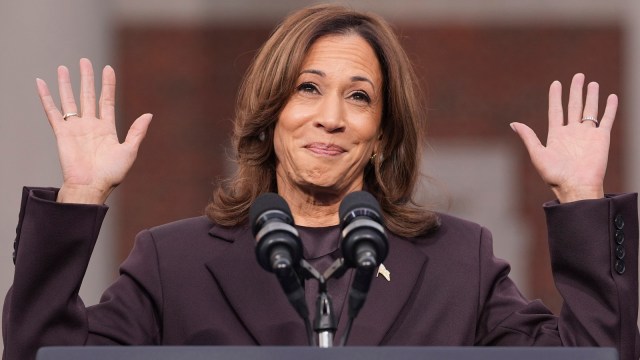
On September 10, 2016, mere weeks before he was to be elected president of the United States for the first time, Donald J Trump spoke at the funeral of one of the figureheads of the American right, Phyllis Schlafly, in St Louis, Missouri, where he drew parallels between his journey and hers: “Her legacy will live on every time some underdog, outmatched and outgunned, defies the odds and delivers a win for the people.”
Schlafly’s story, seen from one perspective, is certainly inspiring: A housewife — she wore the label like a badge of honour — Schlafly is best known for leading the fight against the Equal Rights Amendment (ERA), a key feminist project of the 1970s to enshrine the principle of gender equality in the American constitution, explicitly prohibiting discrimination against women. For Schlafly, a true-blue conservative, the Amendment signified everything that was wrong with the US at a time of great churn, when women and queer folks marched the streets and pushed for recognition of their rights: To her, the ERA, with its “mindless equality”, spelt the end of women’s privileges. Women, she warned, would no longer have the right to be financially supported by their husbands and would be drafted into the armed forces, and that women who chose to be housewives and mothers would be looked down upon.
The irony is that, until a friend told her about the ERA, gender politics was not even on Schlafly’s radar. Her passion was national security — Schlafly had written four books on nuclear strategy and described the atomic bomb as “a marvellous gift that was given to our country by a wise god”. In a deeply sexist political culture, however, she was not taken seriously by those whose ear she sought — that is, until she started speaking on women’s issues. The underdog then suddenly came out on top — and here the irony deepens — by speaking against and defeating a movement that fought to make women equal citizens of the US in every sense.
In many ways, the US that voted Trump back into the White House this week has changed from the days when Schlafly sent freshly-baked loaves of bread to male politicians in order to solicit their support for her crusade against the ERA. It is no longer a bizarre idea for women to be in mainstream politics, hold important positions and push policies and laws on a range of subjects, from national security to trade, and not just “women’s issues”. They now lead Fortune 500 companies and figure among those instrumental in shaping the cultural landscape and defining popular tastes. There are 31 self-made women billionaires in the US today — a record high — including musicians Katy Perry and Taylor Swift, skincare and fashion mogul Kim Kardashian, Silicon Valley czars Sheryl Sandberg and Marissa Meyer and eBay CEO Meg Whitman. Which is why, as Kamala Harris’s campaign picked up pace following her nomination at the Democratic National Convention in August, it seemed just possible that a woman would finally make it to the Oval Office.
A lot of post-result analysis has focused on Team Harris’s failure to put real distance between the vice-president’s campaign and her boss, Joe Biden, the wishy-washiness of her position on key issues, as well as the Democrats’ inability to understand just how much the “liberal elite” tag and their general lack of touch with ground reality worked in Trump’s favour. Yet, the fact is that Harris ran at a time when, like in the 1970s, there is great anxiety about new forces — embodied, to a large extent, by women seeking and holding power — undermining an older way of life, when men were still, by and large, in charge. Team Harris’s astuteness in tapping into the rage and despair of women in the post-MeToo, post-Roe v Wade era came up against Team Trump’s recognition that a so-called “browall” of disaffected men — especially young and White — could stem the tide. The latter’s successful strategy of focusing on young men voters, a demographic that has historically recorded very low turnout, and mobilising them to vote in a man with a documented history of misogyny and sexist remarks and who is a convicted felon, suggests that certain fundamental things have not changed since the days when Schlafly found her political ambitions frustrated and pivoted to more “gender-appropriate” issues. In 2020, Harris became the first woman vice-president of the US since the position was created in 1789. But the glass ceiling had not disappeared. It had only moved higher, as 2024 shows — the woman, it turns out, is still the underdog.
pooja.pillai@expressindia.com
© The Indian Express Pvt Ltd
First uploaded on: 07-11-2024 at 17:01 IST


